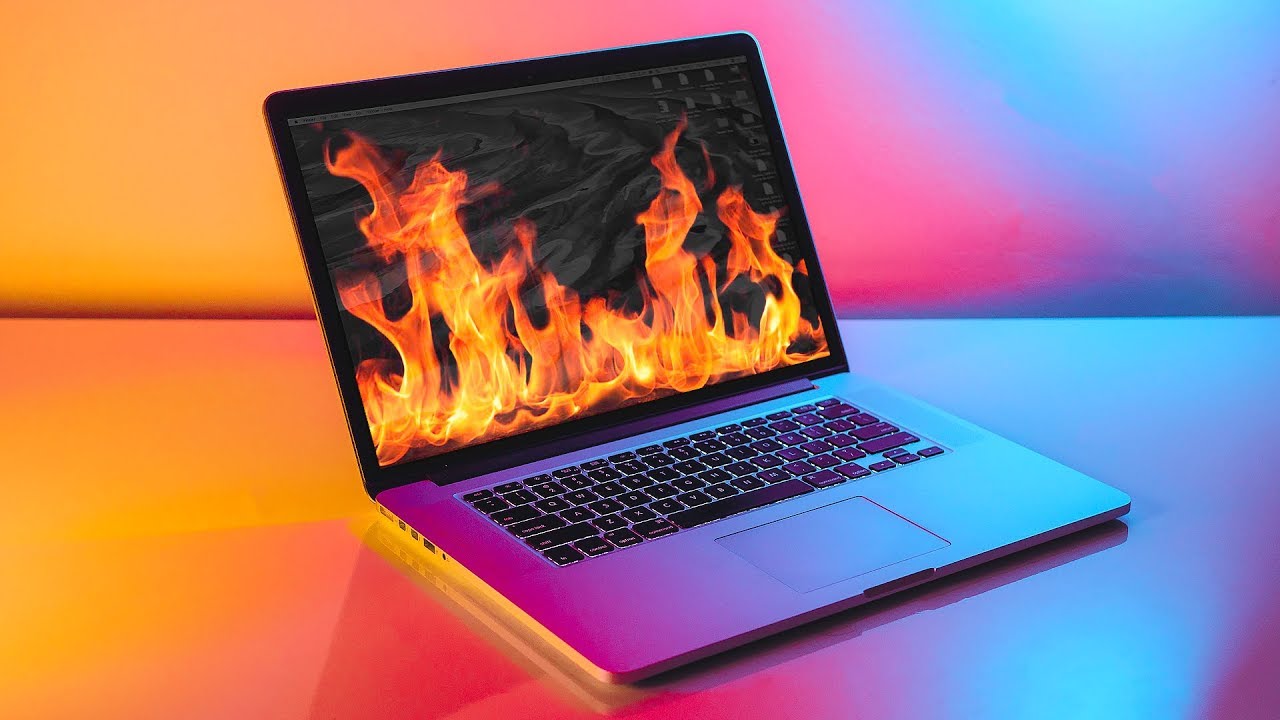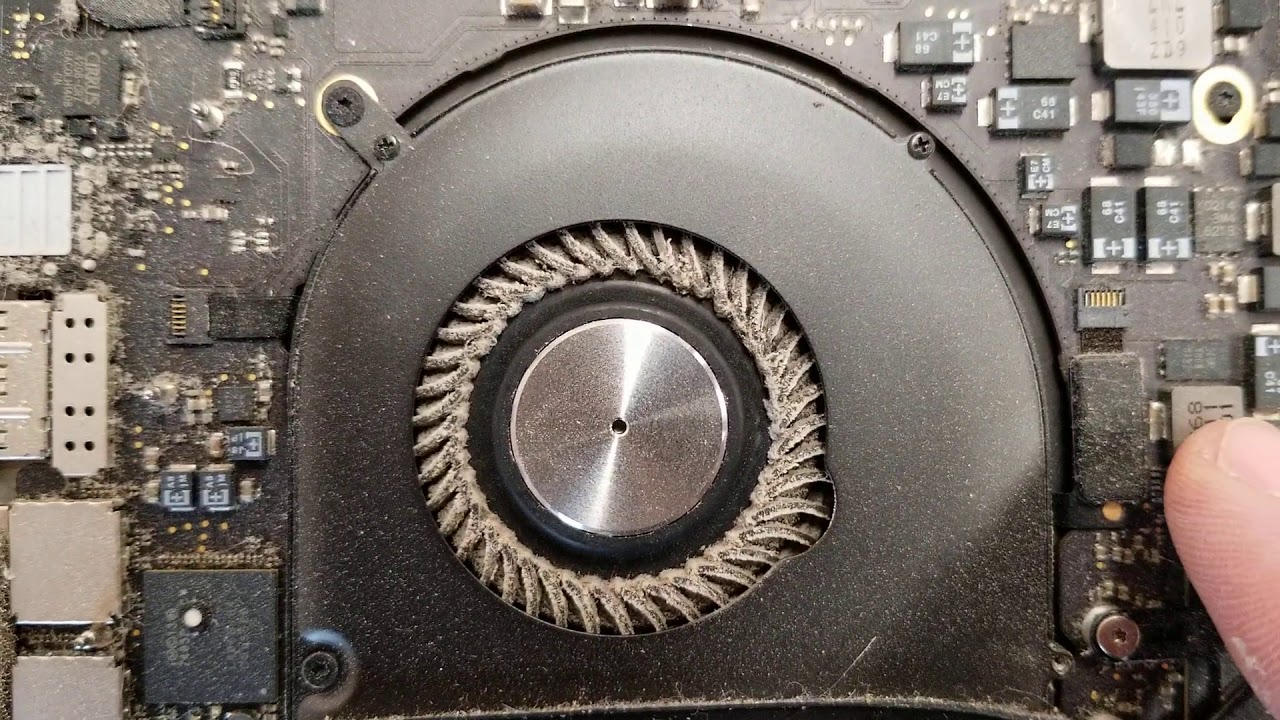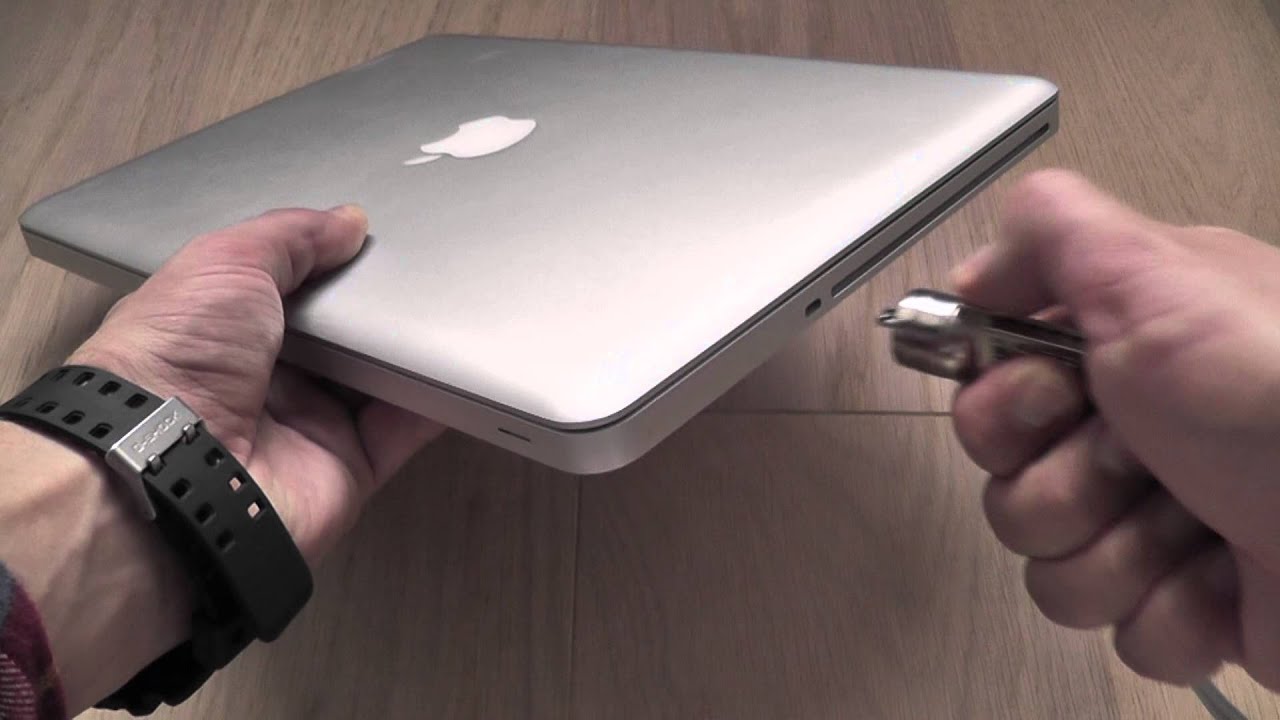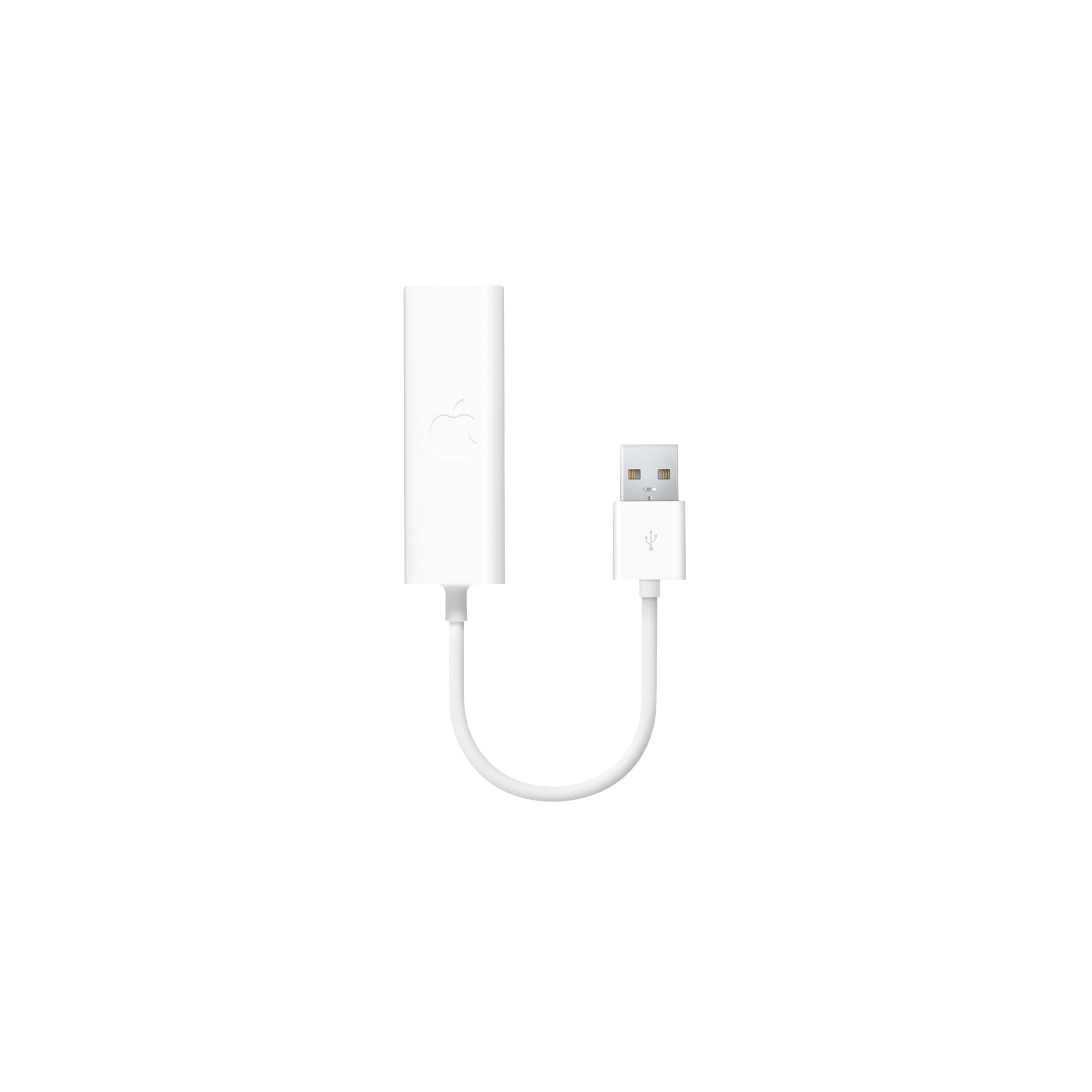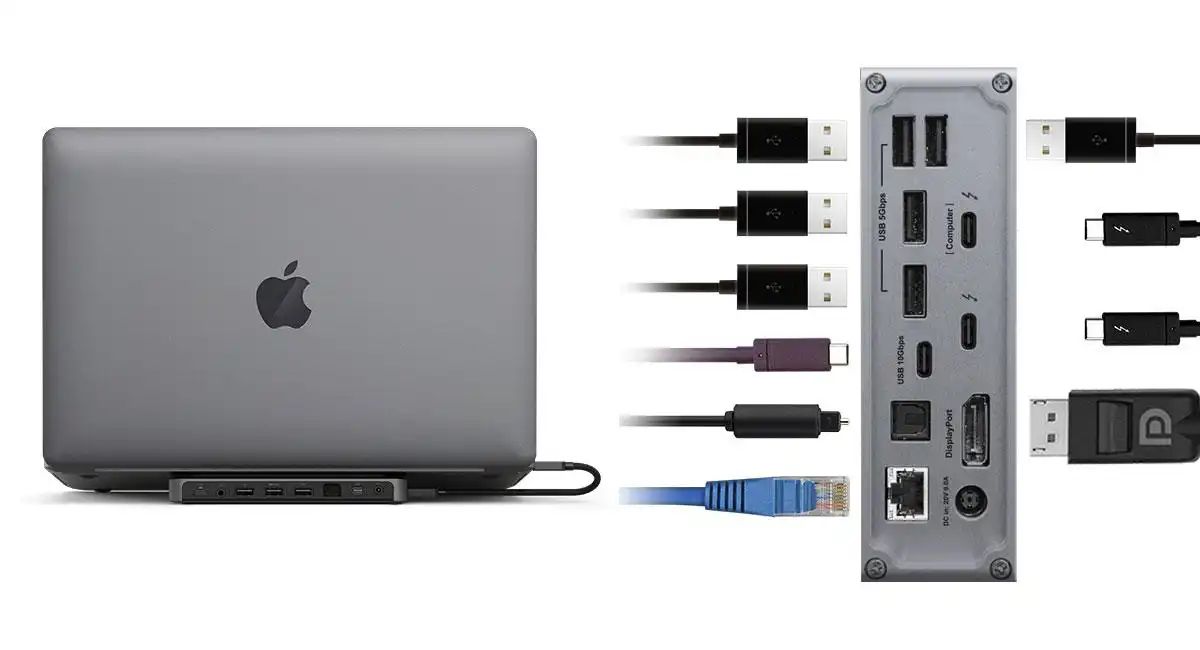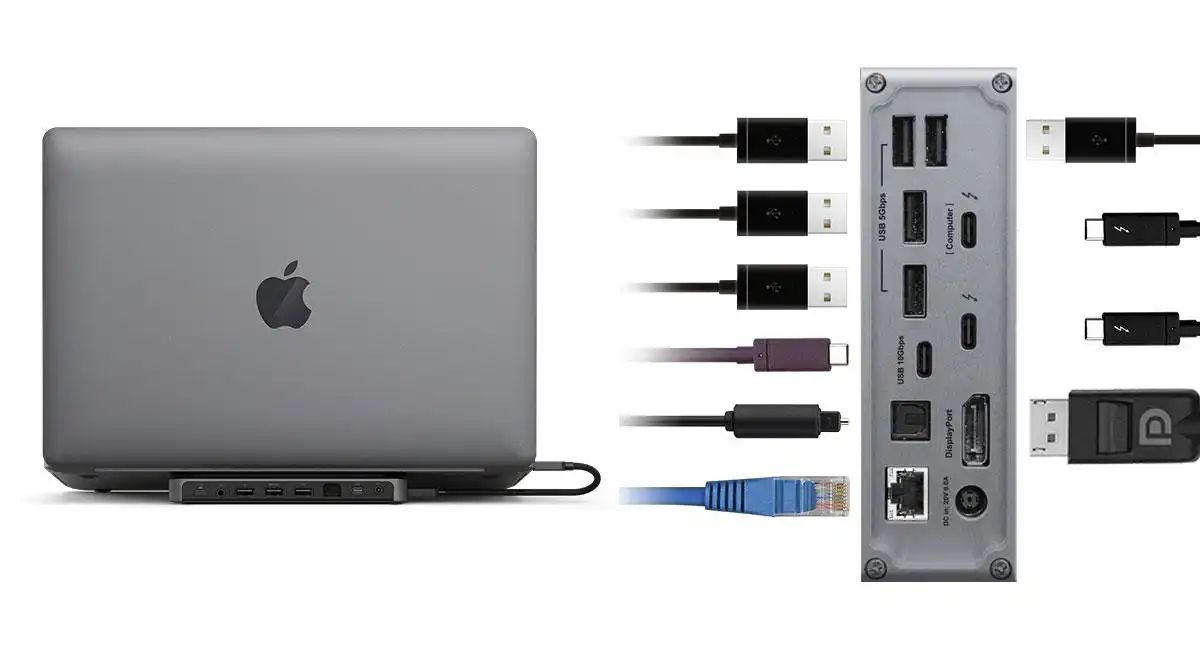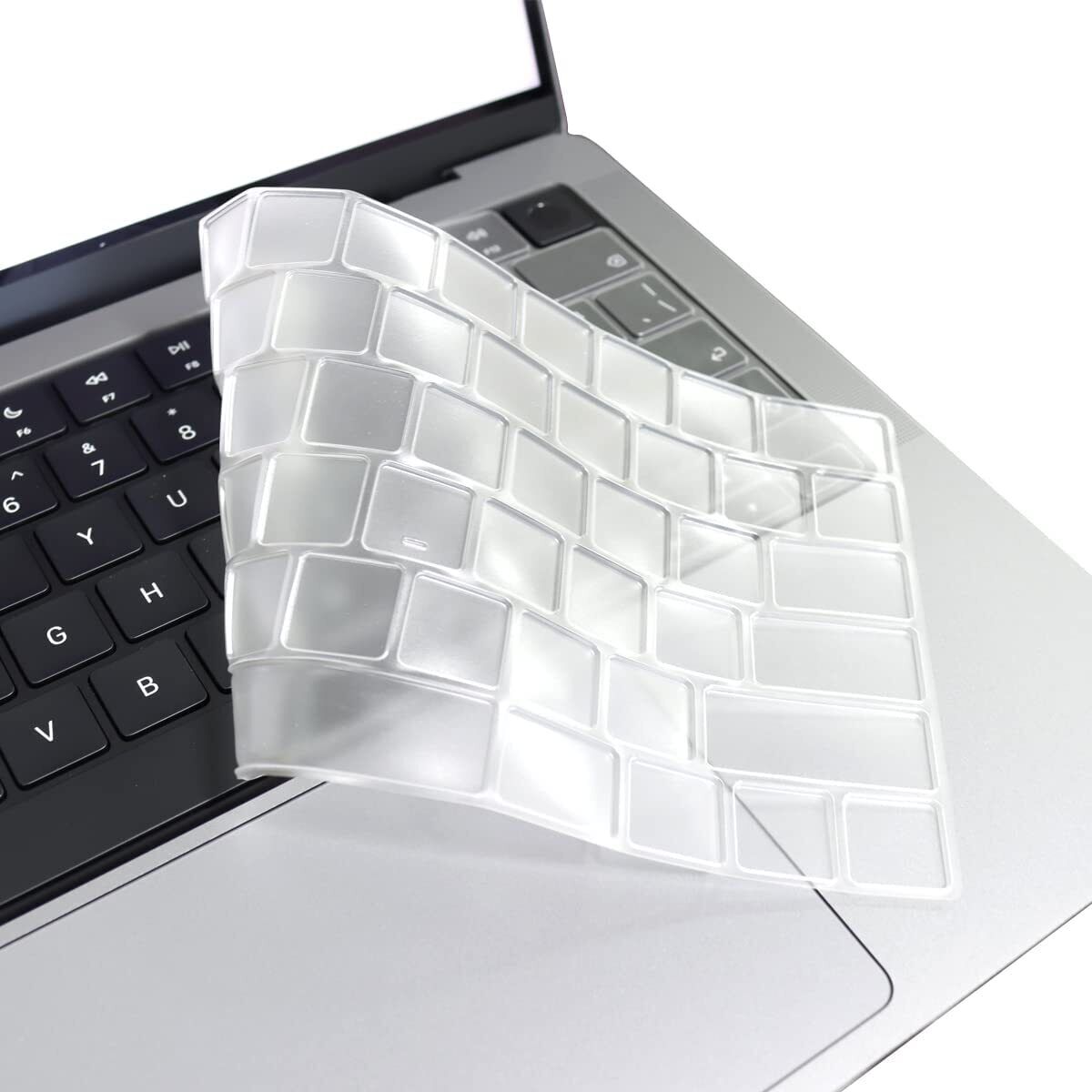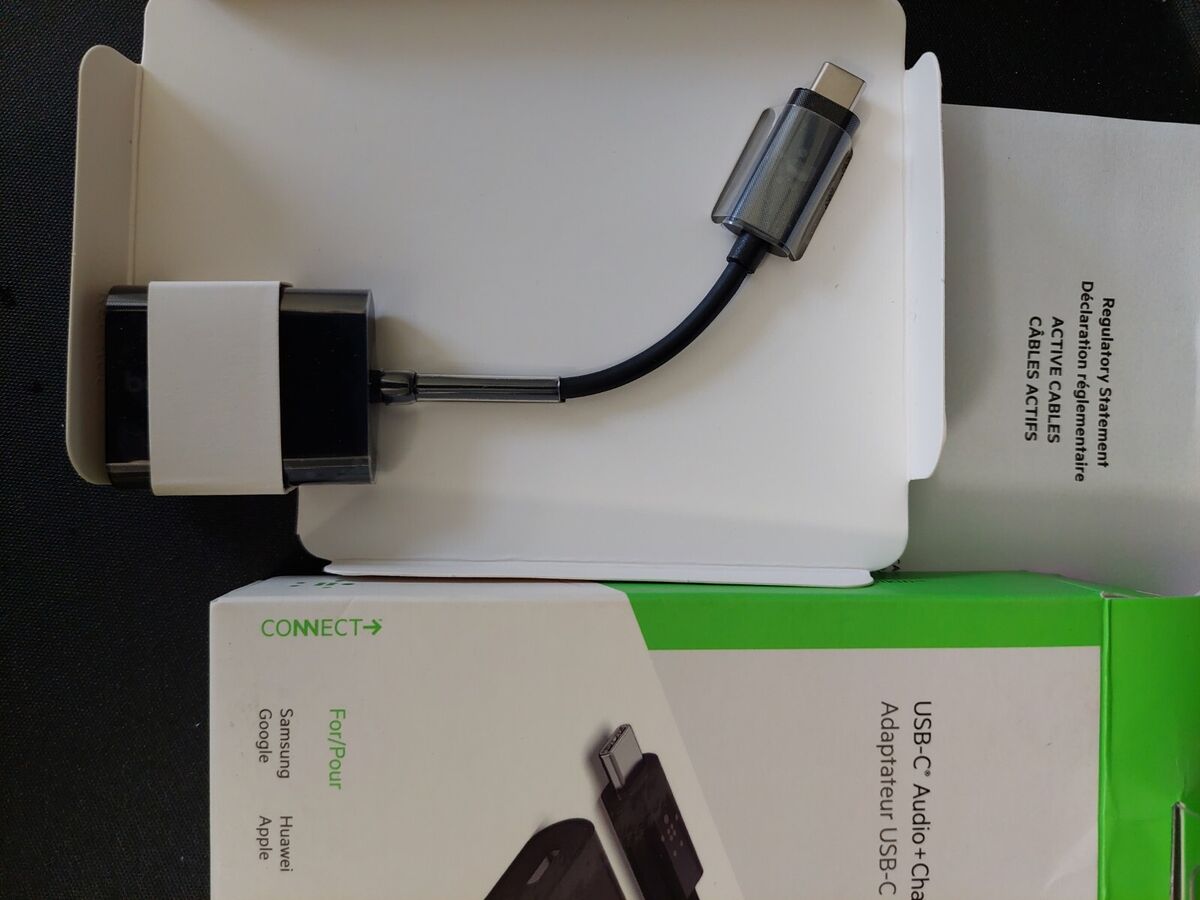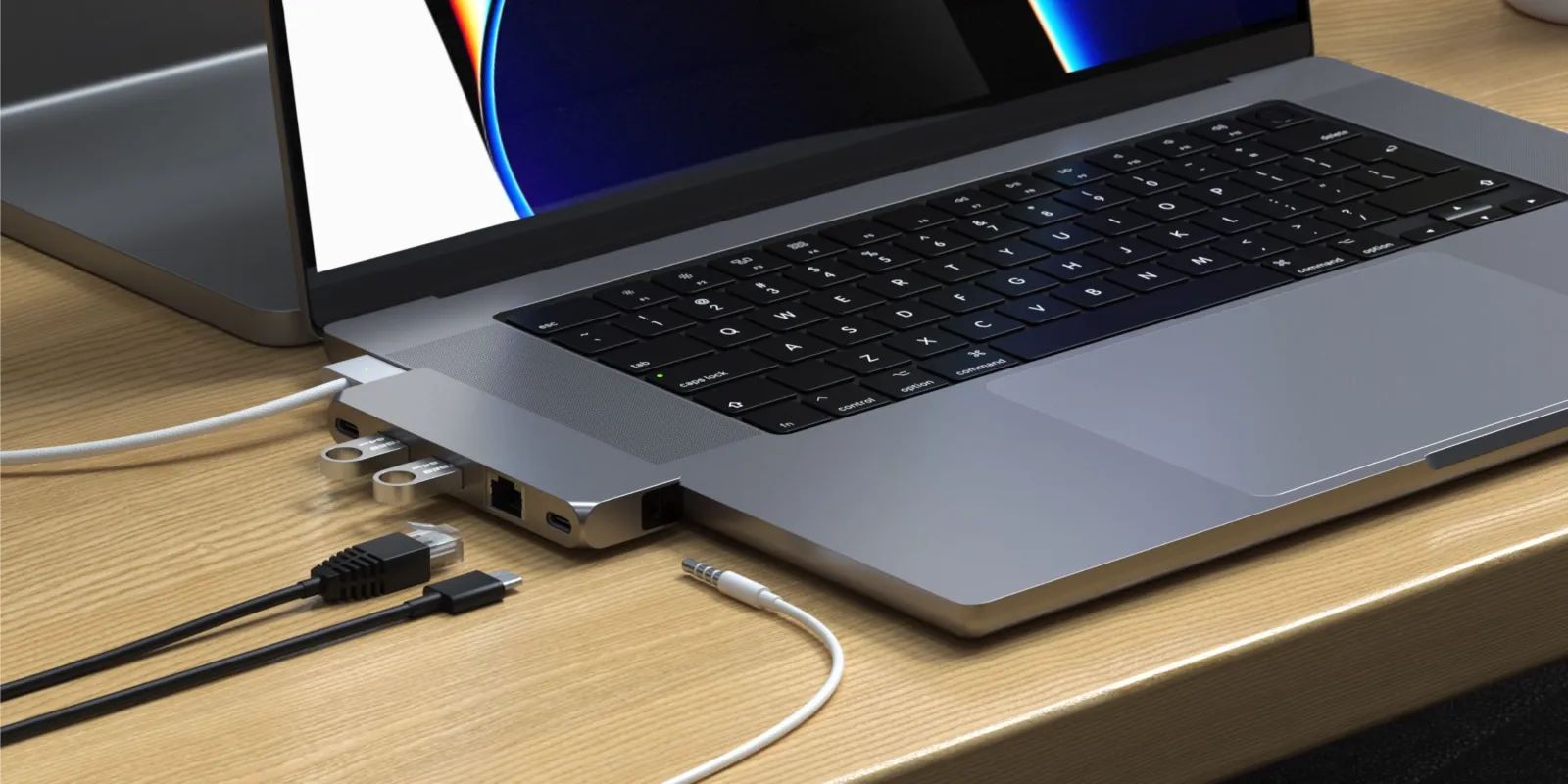Introduction
Welcome to this article addressing the common concern of MacBook Pro users – the issue of overheating. If you’ve noticed that your MacBook Pro is running hotter than usual, you’re not alone. Many MacBook Pro users have experienced this problem, which can be both frustrating and worrisome.
MacBook Pro is renowned for its powerful performance and sleek design, but it’s not immune to overheating. When the internal temperature of your MacBook Pro rises significantly, it can lead to decreased performance, unexpected shutdowns, and even potential long-term damage to the internal components.
Understanding the reasons behind the overheating issue is crucial in order to tackle it effectively. In this article, we will explore the common causes of MacBook Pro overheating and provide some practical tips to prevent it. Whether you’re a creative professional, a student, or someone who simply enjoys using their MacBook Pro, these tips will help you keep your device running cool and optimized for optimal performance.
Overview of MacBook Pro
The MacBook Pro is a line of laptops produced by Apple Inc. Known for its sleek design, high-performance capabilities, and advanced features, the MacBook Pro has become a popular choice among professionals, students, and creative individuals.
Available in various sizes and configurations, the MacBook Pro offers powerful processors, vibrant Retina displays, impressive graphics capabilities, and ample storage space. It also includes a full-sized keyboard with a Touch Bar for added functionality and convenience.
With its state-of-the-art components, the MacBook Pro is capable of handling demanding tasks such as video editing, graphic design, and software development with ease. Its efficient operating system, macOS, provides a seamless user experience and integrates well with other Apple devices through features such as Handoff and Continuity.
In addition to its performance prowess, the MacBook Pro boasts a sturdy and lightweight construction, making it a portable companion for professionals on the go. The laptop also features a range of connectivity options, including Thunderbolt 3 ports, USB-C ports, and an audio jack, ensuring compatibility with various peripherals.
One remarkable aspect of the MacBook Pro is its commitment to sustainability. The laptop is built with environmentally friendly materials and components and is designed to consume less energy. Apple’s dedication to reducing its carbon footprint is evident in the MacBook Pro’s energy-efficient design and recyclable packaging.
Overall, the MacBook Pro offers a premium computing experience with its blend of cutting-edge technologies, elegant design, and user-friendly interface. However, like any electronic device, it is susceptible to overheating, which can impact performance and longevity if not addressed appropriately.
Common Reasons for Overheating
Several factors can contribute to the overheating of your MacBook Pro. Understanding these common causes can help you identify the issue and take appropriate measures to prevent it from occurring frequently. Here are some of the most prevalent reasons for MacBook Pro overheating:
- Dust buildup in the fans: Over time, dust and debris can accumulate in the cooling fans of your MacBook Pro, obstructing proper airflow. This results in inefficient cooling and increased heat buildup inside the device.
- High CPU usage: Running CPU-intensive tasks, such as video editing or running multiple resource-intensive applications simultaneously, can put a heavy load on the processor, causing it to generate more heat.
- Running heavy applications: Certain applications, such as 3D modeling software, video games, or virtual machines, can put a significant strain on your MacBook Pro’s resources, leading to increased heat generation.
- Inadequate ventilation: Placing your MacBook Pro on surfaces that restrict airflow, such as thick fabric or soft cushions, can impede proper ventilation and hinder the cooling process.
- Outdated software: Using outdated operating systems or applications can result in performance issues, including increased temperature. It is crucial to regularly update your MacBook Pro’s software to ensure optimal functionality and improved thermal management.
- Malware or virus infection: Malicious software can run in the background of your MacBook Pro, consuming excessive system resources and generating more heat. Regularly scanning for malware and performing system clean-ups can help keep your device secure and prevent overheating.
- Battery issues: A faulty or aging battery can cause your MacBook Pro to heat up. Over time, batteries degrade and may no longer perform optimally, leading to increased heat output.
By being aware of these common reasons for MacBook Pro overheating, you can take proactive steps to prevent them and maintain a cool operating temperature for your device. In the following sections, we will discuss practical tips to address each of these causes and keep your MacBook Pro running optimally.
Dust Buildup in the Fans
One of the primary reasons for MacBook Pro overheating is the accumulation of dust and debris in the cooling fans. Over time, these particles can hinder the fans’ ability to effectively cool down the internal components, leading to increased heat buildup. Here’s how you can address and prevent dust buildup:
- Cleaning the fans: Regularly cleaning the fans is essential to ensure proper airflow. Start by shutting down your MacBook Pro and disconnecting the power adapter. Use a can of compressed air to blow away the dust from the fan vents. Be sure to hold the can upright and use short bursts to prevent moisture buildup. Alternatively, you can use a soft brush to gently remove the dust. Avoid using a vacuum cleaner, as the static electricity it generates can damage your MacBook Pro.
- Using laptop cooling pads: Investing in a laptop cooling pad can provide an extra layer of cooling for your MacBook Pro. These pads typically have built-in fans that help draw heat away from the device, enhancing its overall cooling performance.
- Working in a clean environment: Avoid using your MacBook Pro in dusty or dirty environments. Dust particles in the air can easily find their way into the internal components, including the fans. Working in a clean and well-ventilated area can significantly reduce the amount of dust that accumulates in your device.
- Scheduling professional cleaning: If you’re uncomfortable cleaning the fans yourself, you can take your MacBook Pro to an authorized service center or contact Apple support for professional cleaning. They have the expertise and tools needed to safely remove the accumulated dust and ensure optimal cooling performance.
By regularly maintaining and cleaning the cooling fans of your MacBook Pro, you can prevent dust buildup and improve the overall cooling efficiency of your device. This simple step can go a long way in preventing overheating and maintaining optimal performance.
High CPU Usage
High CPU usage is another common reason for MacBook Pro overheating. When your MacBook Pro’s processor is under excessive load, it generates more heat, which can result in overheating. Here are some steps you can take to manage CPU usage:
- Identify resource-intensive applications: Monitor your MacBook Pro’s Activity Monitor to identify which applications are consuming the most CPU resources. Sort the applications by CPU usage to determine which ones are causing the issue.
- Close unnecessary applications and processes: If you notice certain applications or processes using a significant portion of your CPU, consider closing them if they’re not immediately needed. This will help reduce the overall CPU load and alleviate overheating.
- Optimize resource-intensive tasks: If you’re running tasks that require a substantial amount of processing power, try to optimize them or break them down into smaller tasks. This will distribute the load more evenly and prevent excessive strain on the CPU.
- Use task management tools: Task management tools, such as Activity Monitor or third-party applications, can help you identify and manage CPU usage more efficiently. These tools provide real-time information about processes and their resource consumption.
- Consider upgrading your hardware: If you frequently perform resource-intensive tasks and find that your MacBook Pro is consistently overheating, it may be worth considering upgrading your hardware. Upgrading to a more powerful CPU or adding more RAM can help handle demanding applications more effectively.
By managing CPU usage and optimizing resource-intensive tasks, you can ensure that your MacBook Pro operates within acceptable temperature ranges. By doing so, you can improve performance and reduce the risk of overheating-related issues.
Running Heavy Applications
Running heavy applications on your MacBook Pro, such as video editing software, virtual machines, or 3D modeling tools, can put a significant strain on the system resources and lead to overheating. Here are some tips to minimize the impact of heavy applications:
- Prioritize tasks and allocate resources: If you need to run multiple heavy applications simultaneously, consider prioritizing them based on their importance. Allocate more resources to the critical tasks and close unnecessary applications to free up system resources.
- Close background processes: Some applications run background processes that can consume significant CPU and memory resources. Identify and close any unnecessary background applications to reduce the overall system load and prevent overheating.
- Optimize application settings: Many heavy applications have settings that allow you to adjust resource usage. Explore the preferences or settings menu of the applications you frequently use and try to optimize them for better performance and reduced resource consumption.
- Restart your MacBook Pro: Restarting your MacBook Pro can help clear out the system’s temporary files and refresh the RAM. This can help improve overall performance and prevent overheating when running heavy applications.
- Consider external storage: If you frequently work with large files or multimedia projects, consider using external storage devices. Offloading files onto external drives can free up valuable disk space and reduce the burden on your MacBook Pro’s internal storage, minimizing the strain on the system.
Remember to monitor the temperature of your MacBook Pro while running heavy applications. If you notice significant overheating or performance issues, it’s essential to take appropriate measures to safeguard your device and prevent potential long-term damage.
Inadequate Ventilation
Inadequate ventilation is a common culprit behind MacBook Pro overheating. When your device is placed on surfaces that restrict airflow or block the vents, it hinders the cooling process and causes the internal temperature to rise. Here’s how you can improve ventilation and prevent overheating:
- Choose a suitable workspace: When using your MacBook Pro, ensure that you place it on a flat, hard surface that allows for proper ventilation. Avoid using it on soft surfaces like beds or couches that can block the vents and limit airflow.
- Invest in a laptop stand or cooling pad: Elevating your MacBook Pro using a laptop stand or cooling pad can help improve airflow and promote better ventilation. These accessories often come with built-in fans that can help dissipate heat more efficiently.
- Keep the vents clean: Regularly inspect the vents of your MacBook Pro and ensure they are not clogged with dust or debris. Use a soft brush or compressed air to clean the vents and remove any obstructions that might impede the airflow.
- Don’t cover the vents: Be mindful of any objects or materials that may accidentally cover the vents of your MacBook Pro, such as papers, stickers, or cases. Keep the vents clear and unobstructed to allow for proper airflow.
- Use a cooling pad with built-in fans: Consider using a cooling pad with built-in fans specifically designed to improve airflow and provide better cooling for your MacBook Pro. These cooling pads help create a more optimal environment for temperature regulation.
By ensuring adequate ventilation for your MacBook Pro, you can significantly reduce the risk of overheating. Pay attention to the placement and environment in which you use your device to maintain proper airflow and optimize its cooling capabilities.
Outdated Software
Using outdated software can contribute to MacBook Pro overheating and performance issues. Outdated operating systems and applications may lack important performance optimizations and bug fixes, resulting in increased system resource consumption and heat generation. Here’s how you can address the issue of outdated software and prevent overheating:
- Update macOS: Regularly check for macOS updates and install the latest version available. Apple releases updates that include performance improvements, bug fixes, and thermal management enhancements, which can help optimize your MacBook Pro’s performance and prevent overheating.
- Update applications: Keep your applications up to date by regularly checking for updates in the App Store or the application’s official website. Application updates often address performance issues and include fixes that can improve efficiency and reduce unnecessary resource utilization.
- Remove unnecessary applications: Take the time to assess your applications and remove any that you no longer use. Unnecessary applications can still consume system resources and potentially contribute to overheating. Removing them can free up valuable resources and reduce the strain on your MacBook Pro.
- Disable unnecessary startup items: Some applications have startup items that automatically launch upon system boot-up. These items can slow down your MacBook Pro and lead to increased heat generation. Review your startup items in System Preferences and disable any that are unnecessary.
- Reset System Management Controller (SMC): In some cases, resetting the SMC of your MacBook Pro can help resolve performance issues and improve thermal management. The process for resetting the SMC varies depending on your MacBook Pro model, so refer to Apple’s support documentation for specific instructions.
By keeping your software up to date and removing unnecessary applications, you can ensure that your MacBook Pro operates efficiently and stays cool. Regularly checking for updates and performing software maintenance goes a long way in preventing overheating-related issues.
Malware or Virus Infection
Malware or virus infection can have a detrimental impact on your MacBook Pro’s performance and can also contribute to overheating. Malicious software running in the background consumes system resources, causing your MacBook Pro to work harder and generate more heat. Here’s how you can address malware or virus infection:
- Install reputable antivirus software: Protect your MacBook Pro with reputable antivirus software that can detect and remove malware or viruses. Regularly scan your system for any potential threats and ensure your antivirus software is up to date.
- Perform software updates: Keep your macOS and applications updated to the latest versions. Software updates often include security patches that address vulnerabilities and protect your MacBook Pro from malware attacks.
- Download apps from trusted sources: Be cautious when downloading applications and install them only from trusted sources. Avoid downloading software from unverified websites or clicking on suspicious links, as they can contain malware or viruses that can compromise your system’s security.
- Scan for malware and viruses regularly: Set a schedule to regularly scan your MacBook Pro for malware and viruses. This helps detect any potential threats that might have infected your system, allowing you to take swift action to remove them.
- Enable built-in security features: macOS provides built-in security features that can help protect your MacBook Pro from malware. Ensure that features such as Gatekeeper, XProtect, and FileVault are enabled for enhanced security.
- Be cautious of phishing attempts: Avoid clicking on suspicious email attachments or providing personal information on unsecured websites. Social engineering attacks, such as phishing, can trick you into downloading malware or compromising your system’s security.
By proactively protecting your MacBook Pro against malware and viruses, you not only safeguard your personal data but also prevent performance issues and overheating. Remember to stay vigilant and maintain a secure computing environment to ensure the optimal performance and longevity of your device.
Battery Issues
Battery issues can contribute to MacBook Pro overheating. As batteries age, their capacity to hold a charge decreases, which can result in increased heat production. Here are some steps you can take to address battery-related problems:
- Check battery health: Monitor the health of your MacBook Pro’s battery. Navigate to “System Preferences” and click on “Battery” to view the current condition of your battery. If it displays a “Service Battery” message or has a significantly reduced capacity, it may be time to replace the battery.
- Calibrate the battery: Calibrating the battery can help recalibrate the battery management system and improve its accuracy in determining the available charge. Follow the guidelines provided by Apple to properly calibrate your MacBook Pro’s battery.
- Avoid extreme temperatures: Exposure to extreme temperatures, both hot and cold, can affect battery performance. Avoid using your MacBook Pro in direct sunlight or in excessively cold environments, as it can impact the battery’s efficiency.
- Manually adjust screen brightness: Lowering the screen brightness can help reduce battery usage, which in turn can help prevent overheating. You can manually adjust the screen brightness through the Control Center or System Preferences.
- Manage background processes: Limit the number of unnecessary applications and processes running in the background to reduce battery consumption. This can help reduce the overall heat generated by your MacBook Pro.
- Disconnect unnecessary peripherals: Connected peripherals, such as external hard drives or USB devices, draw power from your MacBook Pro’s battery. Disconnect any unnecessary peripherals when not in use to reduce battery drain and lessen heat production.
If you continue to experience battery-related issues or concerns, it is advisable to reach out to Apple Support or visit an authorized service center for further assistance. Proper battery management and maintenance can help ensure your MacBook Pro operates at an optimal temperature and prolong battery life.
Tips to Prevent Overheating
Preventing overheating is essential to maintain the performance and longevity of your MacBook Pro. Here are some tips to help you keep your device cool:
- Cleaning the fans: Regularly clean the cooling fans of your MacBook Pro to remove dust and debris that can obstruct airflow and hinder cooling.
- Managing CPU usage: Monitor and manage the CPU usage by closing unnecessary applications and optimizing resource-intensive tasks.
- Minimizing heavy application usage: Limit the usage of heavy applications and close them when not in use to prevent excessive strain on system resources.
- Improving ventilation: Place your MacBook Pro on a flat and hard surface to ensure adequate airflow and prevent the accumulation of heat.
- Updating software: Keep your operating system and applications up to date to benefit from performance improvements and thermal management enhancements.
- Scanning for malware or virus: Regularly scan your MacBook Pro for malware or viruses and take appropriate actions to remove any detected threats.
- Checking battery health: Monitor the health of your battery and consider replacing it if it exhibits signs of deterioration.
By implementing these tips, you can significantly reduce the risk of overheating and optimize the performance of your MacBook Pro. Remember, prevention is key when it comes to maintaining the cool and optimal functioning of your device.
Cleaning the Fans
Regularly cleaning the fans of your MacBook Pro is crucial in preventing overheating. Dust and debris can accumulate over time, obstructing proper airflow and reducing the cooling efficiency of the device. Here’s how you can clean the fans of your MacBook Pro:
- Prepare for cleaning: Start by shutting down your MacBook Pro and disconnecting the power adapter. It’s important to work on a clean and static-free surface to avoid any damage to your device during the cleaning process.
- Access the fans: Different MacBook Pro models have different fan locations. Generally, you can access the fans by removing the bottom panel of your MacBook Pro. Refer to Apple’s official website for specific instructions for your model.
- Blow out the dust: Use a can of compressed air to blow away the dust from the fans. Hold the can upright, and use short bursts of air to dislodge the dust. Avoid tilting the can or using it upside down to prevent moisture from being released onto your MacBook Pro.
- Brush away stubborn dust: If there is stubborn dust that the compressed air couldn’t remove, you can use a soft-bristled brush to gently brush it away. Be gentle to avoid damaging any components.
- Reassemble your MacBook Pro: Once you have cleaned the fans, carefully reassemble your MacBook Pro by securing the bottom panel back in place. Double-check that everything is properly aligned and tightened.
It is important to note that cleaning the fans of your MacBook Pro requires a certain level of technical skill. If you are unsure or uncomfortable performing the process yourself, it is recommended to seek assistance from an authorized service center.
By cleaning the fans regularly, you can remove the accumulated dust and debris, allowing for proper airflow and effective cooling. This simple maintenance task can greatly reduce the risk of overheating and help maintain the optimal performance of your MacBook Pro.
Managing CPU Usage
Effectively managing CPU usage is essential for preventing MacBook Pro overheating. When the CPU is under excessive load, it generates more heat, which can lead to performance issues and potential overheating. Here are some strategies to help you manage CPU usage:
- Identify resource-intensive processes: Use the Activity Monitor utility on your MacBook Pro to identify which processes are consuming the most CPU resources. Sort the processes by CPU usage to identify the culprits.
- Close unnecessary applications: Close any unnecessary applications running in the background that are consuming CPU resources. By closing these applications, you can free up CPU capacity and reduce heat generation.
- Prioritize tasks: If you need to run multiple tasks simultaneously, prioritize them based on importance. Allocate more CPU resources to critical tasks and close non-essential applications to reduce the CPU load.
- Optimize resource-intensive tasks: If you’re running resource-intensive tasks such as video editing or rendering, consider optimizing them by adjusting settings like resolution or quality. Breaking down heavy tasks into smaller processes can also distribute the load and prevent excessive strain on the CPU.
- Use task management tools: Task management tools like Activity Monitor or third-party applications can help you monitor and manage CPU usage more efficiently. These tools provide real-time information about processes and their resource consumption, allowing you to take appropriate actions.
- Consider hardware upgrades: If you consistently run CPU-intensive tasks and experience frequent overheating, it may be worth considering upgrading your MacBook Pro’s hardware. Increasing RAM or upgrading to a higher-performance CPU can help handle demanding tasks more effectively.
By effectively managing CPU usage, you can optimize the performance of your MacBook Pro and reduce the risk of overheating. Regularly monitoring and adjusting CPU usage will help ensure a smoother and cooler experience while using your device.
Minimizing Heavy Application Usage
Minimizing the usage of heavy applications is crucial for preventing MacBook Pro overheating. Certain applications, such as video editing software, 3D modeling tools, or virtual machines, can put a significant strain on your system resources and lead to increased heat generation. Here are some tips to help you minimize the usage of heavy applications:
- Close unused applications: When not in use, close heavy applications to free up system resources and reduce the strain on your MacBook Pro. Keeping too many resource-intensive applications open simultaneously can lead to excessive CPU usage and increased heat production.
- Use alternative lightweight applications: Explore alternative applications that offer similar functionality but are more lightweight in terms of resource usage. Look for applications that are optimized to run efficiently on your MacBook Pro, reducing the strain on your system and preventing overheating.
- Optimize application settings: Many resource-intensive applications have settings that allow you to adjust their performance impact. Explore the preferences or settings menu of these applications and adjust settings that can reduce their resource usage. For example, lowering video rendering quality or increasing the interval for automatic saves can help minimize the strain on your MacBook Pro.
- Use cloud-based or remote services: Consider using cloud-based or remote services for resource-intensive tasks. Uploading your files to a cloud server for processing or utilizing a remote server through virtual machines can offload the resource-intensive tasks from your MacBook Pro, reducing heat generation.
- Monitor CPU usage: Keep an eye on the CPU usage of heavy applications to ensure they are not overloading your MacBook Pro. Use the built-in Activity Monitor utility or third-party monitoring tools to monitor CPU usage in real-time. If you notice excessive CPU usage, consider closing or optimizing the application to prevent overheating.
- Plan your workflow: Plan your work or projects carefully to minimize the need for simultaneous usage of heavy applications. Scheduling tasks and allocating specific time slots for running resource-intensive applications can help manage CPU usage and prevent excessive heat buildup.
By minimizing the usage of heavy applications, you can reduce strain on your MacBook Pro’s resources, optimize its performance, and prevent overheating-related issues. Be mindful of the applications you use and make conscious decisions to ensure your MacBook Pro operates within safe operating temperatures.
Improving Ventilation
Improving ventilation is crucial for preventing MacBook Pro overheating. Proper airflow is essential to dissipate heat efficiently and maintain optimal operating temperatures. Here are some tips to help you improve ventilation for your MacBook Pro:
- Choose the right work surface: Place your MacBook Pro on a flat and hard surface that allows for proper airflow. Avoid using it on soft surfaces like beds or cushions, as they can obstruct the vents and hinder ventilation.
- Invest in a laptop stand: Consider using a laptop stand or riser that elevates your MacBook Pro. These stands help improve airflow and promote better ventilation, allowing for efficient heat dissipation.
- Use a cooling pad: Cooling pads are accessories with built-in fans that can help draw heat away from your MacBook Pro. They provide an additional layer of cooling and enhance the overall ventilation for your device.
- Avoid covering the vents: Ensure that the vents on the sides and back of your MacBook Pro are not blocked or covered. Keep the area around the vents clear from any objects or materials that may obstruct airflow.
- Open up space around your MacBook Pro: Create an open and clutter-free workspace for your MacBook Pro. Remove any obstacles or items that can limit airflow, such as papers, books, or other devices.
- Use an external display: If you frequently use your MacBook Pro in a desktop setup, consider using an external display. This allows you to close the laptop lid, which can help improve ventilation by reducing the heat trapped within the device.
- Regularly clean the vents: Dust and debris can accumulate on the vents, obstructing airflow. Regularly clean the vents using a soft brush or compressed air to remove any obstructions and ensure optimal ventilation.
By improving ventilation, you allow fresh air to flow through your MacBook Pro, effectively dissipating heat and maintaining optimal temperatures. Implementing these ventilation tips will help prevent overheating and ensure the longevity and performance of your device.
Updating Software
Regularly updating the software on your MacBook Pro is essential for optimal performance and to prevent overheating. Outdated software can lack important performance optimizations and thermal management enhancements, leading to increased heat generation. Here are some tips to ensure your software is up to date:
- Update macOS: Regularly check for macOS updates and install the latest versions available. Apple releases updates that include bug fixes, security patches, and performance improvements, all of which contribute to better thermal management and overall system efficiency.
- Update applications: Keep your applications up to date by visiting the App Store or the official websites of the respective applications. Developers often release updates that address performance issues, introduce new features, and optimize software performance, which can contribute to reducing heat generation.
- Enable automatic updates: Ensure that automatic updates are enabled for both macOS and applications. This ensures that you receive the latest updates as soon as they become available, without needing manual intervention.
- Check for firmware updates: Periodically check for firmware updates for your MacBook Pro. Firmware updates can include important system optimizations that enhance thermal management and improve overall system stability.
- Uninstall unused applications: Regularly assess and uninstall any unused applications from your MacBook Pro. Unnecessary applications may still consume system resources and contribute to heat generation. Removing them can free up resources and improve overall system performance.
- Restart your MacBook Pro: Restarting your MacBook Pro can help clear temporary files and refresh system processes. This can improve overall performance, reduce background resource consumption, and decrease heat generation.
- Maintain a backup: Before performing any software updates, make sure to back up your important files and data. This ensures that you can revert to a previous state if any issues arise during or after the update process.
By regularly updating the software on your MacBook Pro, you can benefit from performance improvements, bug fixes, and thermal management enhancements. Updated software ensures that your device operates efficiently, reducing the risk of overheating and optimizing its overall performance.
Scanning for Malware or Virus
Performing regular scans for malware or viruses is crucial for maintaining the security and performance of your MacBook Pro. Malware and viruses can not only compromise your data but also contribute to overheating by consuming valuable system resources. Here are some tips for scanning and protecting your MacBook Pro:
- Invest in reputable antivirus software: Install reliable antivirus software on your MacBook Pro to detect and remove malware and viruses. There are several trusted antivirus programs available, such as Norton, Bitdefender, or Malwarebytes.
- Keep your antivirus software up to date: Ensure that your antivirus software is always up to date with the latest virus definitions. Regularly check for updates and enable automatic updates to stay protected against new threats.
- Schedule regular scans: Set up a schedule for regular system scans to check for any malware or viruses. Perform full system scans periodically, especially after downloading new files or visiting unfamiliar websites.
- Scan external devices: Before using any external devices, such as USB drives or external hard drives, scan them for potential malware or viruses. External devices can serve as carriers for malware, which can then infect your MacBook Pro.
- Be cautious of phishing attempts: Phishing emails or websites can trick you into downloading malware. Be vigilant and avoid clicking on suspicious links or downloading attachments from unknown sources.
- Enable built-in security features: macOS provides built-in security features such as Gatekeeper and XProtect. Ensure that these features are enabled to add an additional layer of protection against malware and viruses.
- Regularly update your operating system: Keeping your operating system up to date is essential for security and performance. Updates often include security patches that address vulnerabilities and protect against malware attacks.
- Use a firewall: Enable the built-in firewall on your MacBook Pro to block unauthorized access and connections from malicious software. A firewall acts as a barrier between your device and potential threats.
Regularly scanning for malware or viruses and taking appropriate action to remove them helps prevent performance issues and overheating caused by resource-intensive malicious software. By maintaining a secure environment, you can safeguard your MacBook Pro and ensure its optimal performance.
Checking Battery Health
Checking the health of your MacBook Pro’s battery is crucial for preventing overheating. As batteries age, their capacity to hold a charge decreases, which can result in increased heat generation. Here are some tips for checking and managing your battery health:
- Monitor battery health: To check the health of your battery, go to “System Preferences” and click on “Battery.” Here you will find information about the current condition of your battery, including the number of charge cycles and the battery’s maximum capacity.
- Look for signs of deterioration: If your battery displays a “Service Battery” message or has a significantly reduced maximum capacity, it may be time to replace the battery. Pay attention to any sudden decreases in battery life or irregular behavior.
- Calibrate the battery: Calibrating the battery can help recalibrate the battery management system and improve its accuracy in determining the available charge. Follow the guidelines provided by Apple to properly calibrate your MacBook Pro’s battery.
- Avoid extreme temperatures: Excessive heat or cold temperatures can degrade battery performance. Avoid using your MacBook Pro in direct sunlight or in extremely cold environments to prevent accelerated battery deterioration.
- Manage battery-intensive tasks: Battery-intensive tasks, such as video editing or gaming, can put a strain on the battery and cause it to generate more heat. Limit the usage of these tasks when running on battery power to reduce heat generation.
- Disable unnecessary background processes: Some processes running in the background can consume significant battery power and generate heat. Identify and disable any unnecessary background processes to reduce battery usage and prevent overheating.
- Consider adjusting energy saver settings: macOS provides energy saver settings that allow you to optimize power usage and extend battery life. Adjusting these settings can help manage heat generation and prolong battery health.
- Replace the battery: If your battery health declines significantly or you experience performance issues even after following the above steps, it may be time to replace the battery. Contact an authorized service provider or Apple support for battery replacement options.
Regularly checking and managing the health of your MacBook Pro’s battery is key to ensure optimal performance and prevent overheating-related issues. By following these battery health tips, you can prolong the longevity of your battery and maintain a cool operating temperature for your device.
Conclusion
Overheating is a common concern for MacBook Pro users, but by understanding the common causes and implementing the appropriate preventive measures, you can keep your device running optimally. From cleaning the fans and managing CPU usage to optimizing ventilation and updating software, these tips will help you maintain a cool and efficient MacBook Pro.
Dust buildup in the fans can hinder proper airflow, so regular cleaning is essential. Managing CPU usage by closing unnecessary applications and optimizing resource-intensive tasks can prevent excessive heat generation. Improving ventilation by choosing a suitable work surface, using laptop stands or cooling pads, and ensuring unobstructed airflow is crucial for proper heat dissipation.
Keeping the software up to date, scanning for malware or virus infections, and checking battery health are essential steps in preventing overheating and optimizing performance. By updating macOS, applications, and firmware, you benefit from performance enhancements and improved thermal management. Regularly scanning for malware and viruses ensures your MacBook Pro is protected from security threats.
Additionally, checking battery health and taking steps to maintain it, such as calibrating the battery and avoiding extreme temperatures, can help prevent overheating. By following these tips and practicing proper maintenance, you can prolong the life of your MacBook Pro and enjoy optimal performance.
Remember that prevention is key when it comes to addressing overheating issues. By implementing these preventive measures, you can ensure that your MacBook Pro runs efficiently, stays cool, and provides an optimal computing experience for all your needs.







